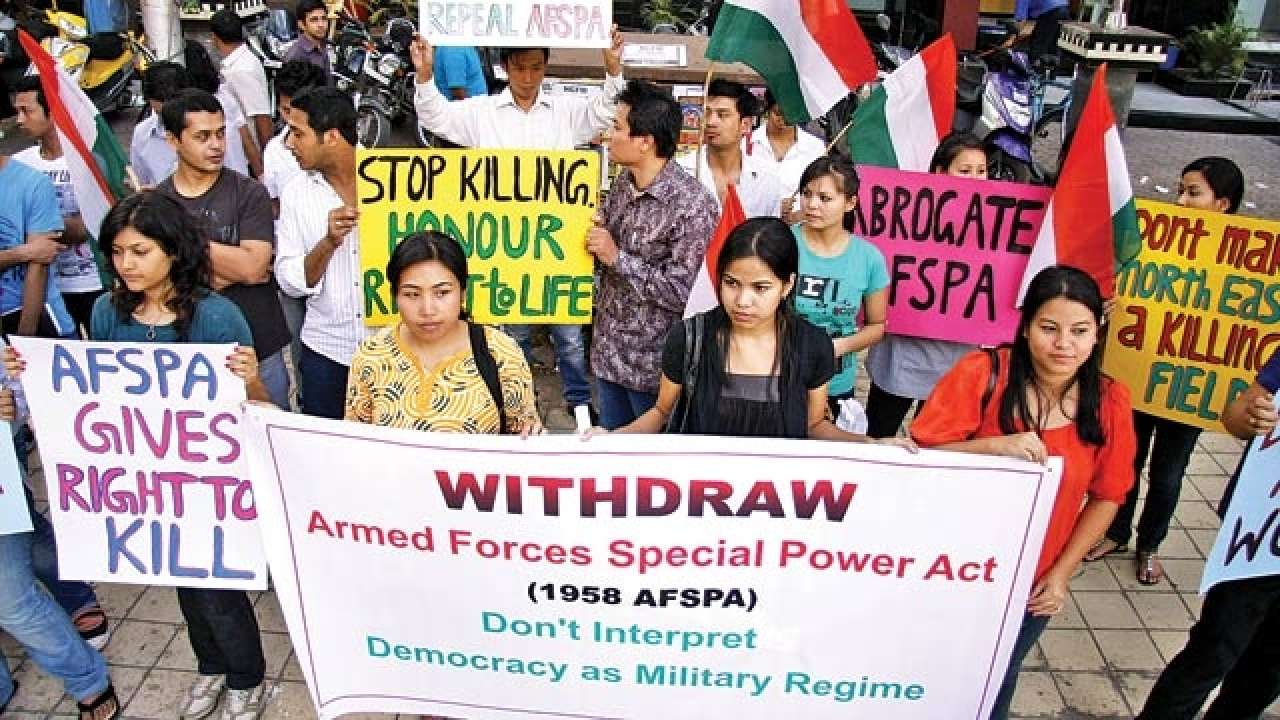The clamour for justice, including the repeal of AFSPA has grown louder after killing 14 unarmed civilians by the Indian armed forces in Nagaland. The Nagaland government has already constituted an SIT for investigation. There is a hope that public pressure might hasten the investigation and the trial. But the concern of another lengthy case of legal procrastination could not be ruled out. The legal history on matters related to AFSPA has shown the arduous task to prosecute and convict the armed forces in civil court for gross human rights violations. To explain, let’s examine the constitutional provisions and legal provisions of AFSPA.
The 42nd constitutional amendment passed during the emergency in 1976 allows the central government to deploy armed forces to aid civil power in any state (Entry 2A of List 1 of the 7th Schedule of the Constitution). Though public order is a state subject; the amendment allows the central government to send its central armed forces for maintaining public order in aid of the civil power. Such deployment of central armed forces could be done whenever there exists an external aggression and internal disturbances (Article 355). And these constitutional provisions were used to justify the constitutionality of AFSPA in Naga People’s Movement of Human Rights v Union of India.
Why is this ‘aid of the civil power’ by the armed forces problematic w.r.t. AFSPA despite the explicit constitutional provision?
In Naga People’s Movement of Human Rights v Union of India, the Supreme Court held that military personnel does not require to operate under the control of the state but requires state’s assent and involvement at various levels. So, suppose an area is notified as ‘disturbed area’ (section 3 AFSPA). In that case, the central government can deploy armed forces in aid of civil power. Also, section 4 AFSPA provide sweeping authority to the armed forces causing death and arrest without a warrant based on the opinion of the armed forces. Thus, when the area is notified as ‘disturbed area’, the armed forces acquire broad powers immediately. Significantly, in the Act, no such procedure is laid down for the aid to be provided by the armed forces to the civil power. So, how does the coordination with the civil administration work without any concrete method?
Let’s look at an example to clarify what aiding the civil power by the armed forces means in the ‘disturbed area’. Though there are many non-official reports, this official report will suffice. In 1995, the Nagaland government constituted a Commission under Justice D.M Sen to probe the shooting, arson and rape by paramilitary forces in Akhulato, Kohima and Mokokchung in Nagaland. The Commission’s findings indicted the army for bypassing the civil administration entirely. They stated that the continued presence of the military and paramilitary forces had undermined the civil and legislative authority over the area. The legitimacy of the actions under AFSPA derives from its being in aid of civil power. Because of the wide powers provided under AFSPA, the armed forces on the ground does not aid the civil power, but supplants the civil administration.
Drawing legitimacy from the constitution, AFSPA undermine the civilian authority, and creates a spatial exception that feeds this vicious culture of killings of people by the armed forces without any accountability. The notification of ‘disturbed area’ means the armed forces will have the power to shoot, kill and arrest without warrant based on the opinion of the armed forces. Surprisingly, this extraordinary power under AFSPA was not examined by the Supreme Court in Naga People’s Movement of Human Rights v Union of India against ‘right to life and personal liberty’ (Article 21).
The legal battle of Extra Judicial Victim Families Association (EEVFAM) presents how difficult it is to prosecute armed forces for human rights violations. Extra Judicial Victim Families Association v UOI was a small victory in fake encounter killings. The Supreme Court issued directions to investigate selected cases from the documented 1528 cases. Based on the Supreme Court’s direction, the Central Bureau of Investigation started an investigation and filed a case in Imphal west CJM. But the central government has so far denied to grant sanction to prosecute the accused from the armed forces. The central government cited Section 6 of AFSPA, which requires prior sanction from the central government to prosecute the armed forces in the civil court. As expectedly, the case has hit a legal wall.
Let’s assume that if the central government allows sanction for prosecution, the commanding officer of the armed forces has the discretion to either proceed before a criminal court or a court martial (section 125 Army Act, 1950). Even if the armed forces are tried under court martial, the secrecy and unavailability of the information on court martial makes it impossible to verify its effectiveness on serious human rights violations. Also, the issue with court martial is that it has various structural flaws like lack of independence and impartiality. The prosecutor and the defending officer will be subordinate to the convening officer. The members do not have proper legal training. Such structural defects make the military justice system a severe obstacle in conducting fair trials for serious human rights violations. Also, except for a few cases, the conviction of army personnel through court-martial is a rarity.
Gross human rights violations by the armed forces in the ‘disturbed area’ with impunity and the continual denial for prosecution points to the concerning effect of AFSPA in a democracy. Till AFSPA is in force, the law itself will continue to deny justice to the victims.












